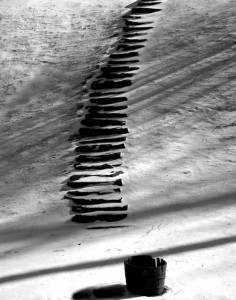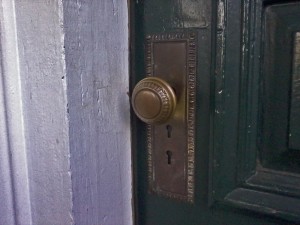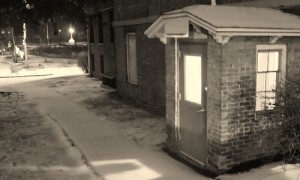February 1, 2016
By Arthur H. Gunther III
The scene was a stage set of sorts, and as with all theater, the place, the people, even the time were of less relative importance than the happening. And it was that, a telling moment.
I was at an elementary school concert of third-through-fifth-grade chorus and orchestra as a grandparent doing family duty but also pleased as punch that I could be in a setting of young schoolchildren. There is such magic there — imagination, wide eyes, inquisitiveness — that comes naturally to kids. They are so much like the characters in the many books and stories, fabled and otherwise, that they are bathed in from infancy. That blanket of warmth and security gradually slips to the floor as they step into bigger shoes, and we are all the poorer for that. Would that our adult world had the characteristics of childhood even as it has its realism and responsibility.
Children grow up so fast that in a millisecond they seem your elders, and you are learning from them. Of course, if we look and listen, they are doing that anyway in the age group.
As a grandparent, you get to observe more than the regular child, who is anything but. There is no “regular” child, of course, just the assortment of the shy, the outgoing, the talkative, the joiners, the daydreamers. So watching these varied types perform in a concert reinforce what you have always known but perhaps have not thought about for some time: There is hope for the future. We were all the irregular child in some way, and others — adults — had hopes for us that for most materialized.
Being the grandparent makes you look at the one you particularly know, and to see my grandson in the school setting, surrounded by peers, in a group dynamic, gave me further clues about who he is and where he will go. There is reinforcing hope there, too.
Such a personal story was turning its pages, too, for the woman next to me and the fellow on the other side. And for other grandparents. For great-grandparents. For older and younger siblings.
And there was a script for teachers as well, trying to get the job done, certainly, after so much rehearsal and following an already exhausting school day. Their efforts seemed magical in their enthusiasm. I do not know how a teacher musters that each and every day. What an under-appreciated group.
So, the setting, the place, the time, the kids, the full principals, is not important here. Life, the living of it all, is. The world may be a mess, as it usually is. The job market is shrinking. The presidential race is P.T. Barnum. Maybe the world itself is going to hell in a hand basket, which my own grandparents thought in the 1950s. And theirs believed in the 1920s.
But in that Nyack, N.Y., school auditorium, in the compelling moment when you see children open up in a concert as if the spring daffodils had just popped, you cannot help but have goosebumps.
Maybe we should all go to school concerts more often.
The writer is a retired newspaperman who can be reached via ahgunther@hotmail.com



